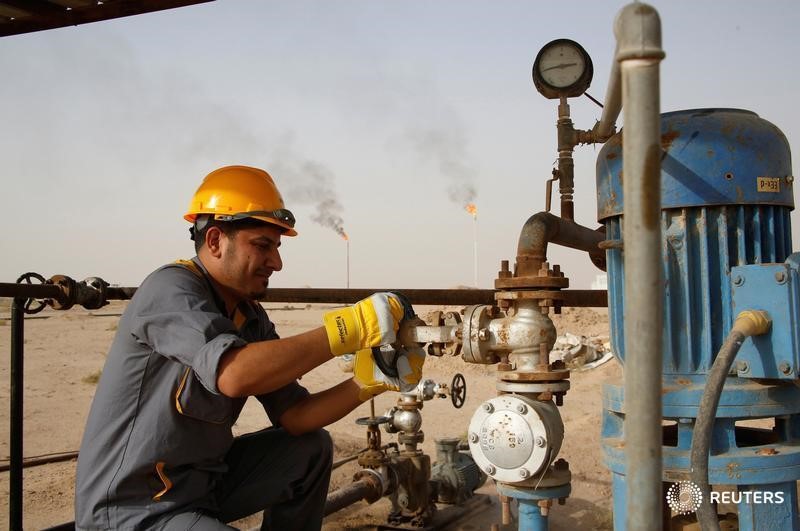Commodities
Oil prices rebound after tumbling below $80, demand concerns persist


© Reuters.
Investing.com– Oil prices rose on Thursday, recovering from near four-month lows as markets remained on edge over a slowdown in global crude demand, especially following weak signals from several major economies.
Crude prices fell sharply this week, with Brent briefly trading below the key $80 a barrel level as a storm of factors appeared to be working against oil markets.
Data from the (API) showed that U.S. crude inventories saw their biggest weekly build since February- at over 11 million barrels in the week to Nov. 3.
The API data signaled some cooling in U.S. fuel consumption, especially as the winter season approaches. Official from the Energy Information Administration is now due on Nov. 15.
Strength in the – which rebounded on a string of hawkish signals from Federal Reserve members- weighed on oil prices, as markets feared further cooling in economic growth due to high interest rates.
Waning concerns over supply disruptions from the Israel-Hamas war also saw traders no longer pricing in a risk premium from the conflict.
rose 0.5% to $80.11 a barrel, while rose 0.8% to $75.90 a barrel by 20:54 ET (01:54 GMT).
Weak economic signals dent oil markets
China- the world’s biggest oil importer- fell back into disinflationary territory in October, data showed on Thursday. Both consumer and producer inflation contracted despite repeated efforts from Beijing to improve economic growth.
The inflation readings came just a few days after disappointing from the country. While China’s oil imports still remained steady, analysts warned of a potential slowdown in crude demand, especially with high stockpiles and potentially lower export quotas for refiners.
Chinese fuel demand saw strong growth in October, thanks largely to increased travel during the Golden Week holiday. But other economic indicators for the month still pointed to weak business activity, which traders fear could further dent oil demand this year.
In the euro zone, data released on Wednesday showed a sustained decline in through October, adding to concerns over a recession in the region. from the UK, due on Friday, is also expected to show a continued downturn.
Signs of sustained economic weakness in recent weeks saw markets second-guessing expectations for steady oil demand this year. Assurances from Saudi Arabia that crude consumption will remain strong did little to stem losses in oil prices, especially in the face of worsening global economic conditions.
While Saudi Arabia and Moscow said they will maintain their ongoing supply reductions until end-2023, markets were beginning to doubt whether that would be enough to support crude prices, especially as other OPEC members increased production.
U.S. oil production was also seen steadily rising in recent months.
Commodities
Oil prices rise; U.S. crude inventories plunge, Russia-Ukraine truce eyed
Commodities
India’s Reliance to stop buying Venezuelan oil over US tariffs, sources say
Commodities
Oil prices climb on Venezuela supply worries

 Forex3 years ago
Forex3 years agoForex Today: the dollar is gaining strength amid gloomy sentiment at the start of the Fed’s week

 Forex3 years ago
Forex3 years agoUnbiased review of Pocket Option broker

 Forex3 years ago
Forex3 years agoDollar to pound sterling exchange rate today: Pound plummeted to its lowest since 1985

 Forex3 years ago
Forex3 years agoHow is the Australian dollar doing today?

 Cryptocurrency3 years ago
Cryptocurrency3 years agoWhat happened in the crypto market – current events today

 World3 years ago
World3 years agoWhy are modern video games an art form?

 Commodities3 years ago
Commodities3 years agoCopper continues to fall in price on expectations of lower demand in China

 Economy3 years ago
Economy3 years agoCrude oil tankers double in price due to EU anti-Russian sanctions



































